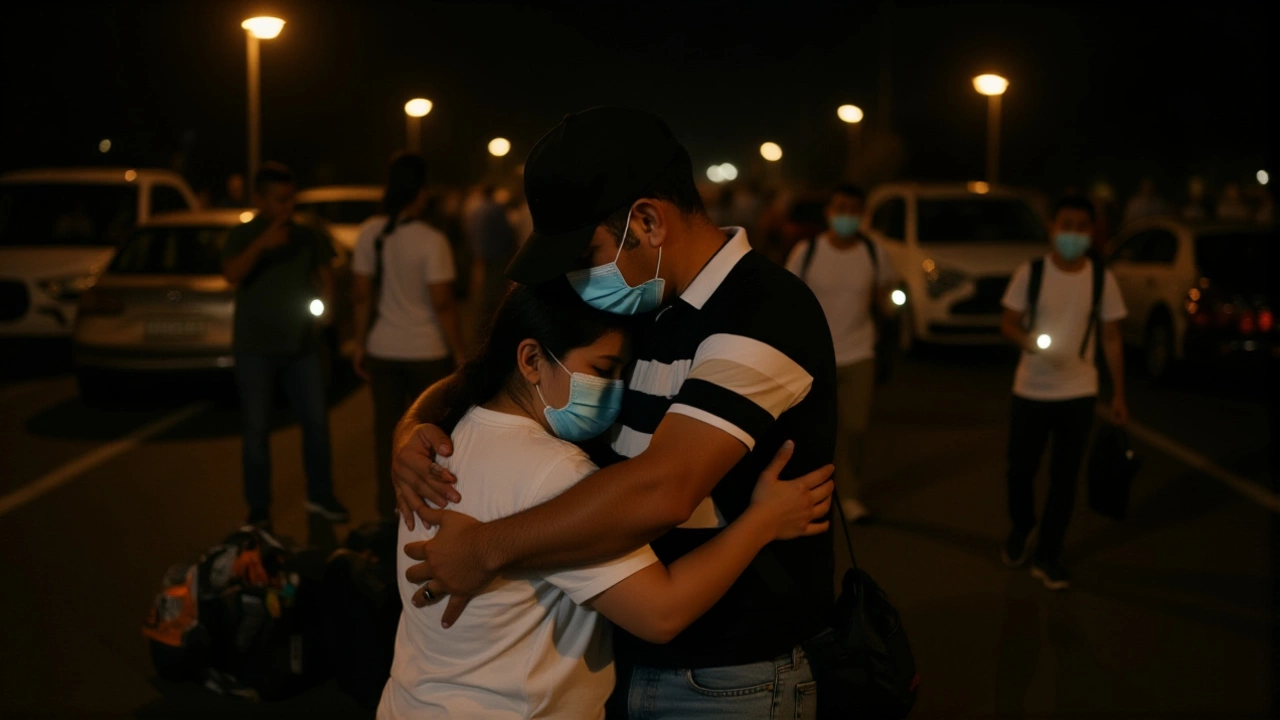Between February 12 and 15, 2025, the United States forcibly expelled 299 third-country nationals to Panama—without legal notices, without interviews, and without regard for their right to seek asylum. The expulsions, confirmed by a Human Rights Watch report released April 24, 2025, were carried out under a controversial agreement signed months earlier and represent a stark departure from decades of U.S. legal obligations. Among those removed was Senayit, a 37-year-old Amhara woman from Ethiopia who fled ethnic persecution. She was never asked if she feared returning home. She was simply put on a plane.
How the Expulsions Worked—And Why They Broke the Law
The expulsions were executed under a July 1, 2024, memorandum of understanding (MOU) between the United States Department of Homeland Security and the government of Panama. The U.S. paid approximately $14 million to cover airfare, escorts, interpreters, and detention costs—essentially outsourcing its deportation burden. By May 6, 2025, the program had sent 1,969 people to 12 countries, including Colombia, Ecuador, India, and Rwanda. The first flight under this arrangement took place in August 2024.
But here’s the problem: U.S. law requires anyone who reaches a border crossing point to be given a chance to explain why they fear returning home. That’s called a credible fear interview. It’s not a formality—it’s a legal safeguard. None of the 48 people interviewed by Human Rights Watch had been offered one. No paperwork. No legal counsel. No opportunity to speak. That’s not enforcement. It’s summary removal.
Senayit, like many others, had escaped violence targeting her ethnic group in Ethiopia. Others fled political repression in Eritrea, gang threats in Honduras, and religious persecution in Pakistan. They didn’t cross the border legally. But under U.S. and international law, that doesn’t strip them of their right to ask for protection. The Trump administration, which took office January 20, 2025, declared the southern border an "invasion"—and then moved quickly to dismantle every legal pathway for asylum.
Who’s Paying the Price—and Who’s Complicit
Panama didn’t act alone. It accepted the money and the people. The U.S. Embassy in Panama claimed the MOU led to a 99% drop in crossings through the Darién Gap. But that statistic ignores human cost. For every fewer migrant counted, there’s a person dumped into a country they’ve never seen, with no support, no family, and no legal status.
Human Rights Watch called it a violation of the principle of nonrefoulement—the bedrock of international refugee law that forbids sending people back to places where they face persecution. The report didn’t mince words: "These collective expulsions violated international law and should be remedied by permitting the return of people wrongfully removed."
And Panama? It’s not just Panama. By September 2025, the U.S. had sent people to Rwanda, Eswatini, South Sudan, Uzbekistan, El Salvador, Costa Rica, and even Ghana—where the first military deportation flight, using a C-17 cargo plane, landed on September 5, 2025. None of these countries had any meaningful ties to the deportees. Some had no asylum systems at all.
And the pressure? Real. According to the Council on Foreign Relations, Panama agreed to host 300 migrants in February 2025 after the U.S. threatened to retake control of the Panama Canal. In March, the U.S. paid El Salvador $6 million to house 238 alleged members of Venezuela’s Tren de Aragua gang in its megaprison. The message was clear: pay up, or face consequences.

The Ripple Effect: A New Global Deportation Network
This isn’t an isolated incident. It’s the beginning of a new architecture of expulsion—one built on coercion, cash, and secrecy. The U.S. is no longer just deporting people to their home countries. It’s creating a global chain of third-country dumping grounds. And it’s working: by September 2025, nearly a dozen nations had signed on, often quietly, often under financial or political duress.
The Council on Foreign Relations called the campaign "unprecedented and dangerous—not only to the rights of those it targets, but also to our democracy." Why? Because when the rule of law is bypassed for expediency, it doesn’t just hurt migrants. It corrodes the institutions meant to protect everyone.
Legal experts warn that if the U.S. can send someone to Ghana without a hearing, what’s to stop it from sending a U.S. citizen to El Salvador tomorrow? The precedent is terrifying. The courts have yet to fully challenge this, but lawsuits are mounting. And with the 2026 midterms looming, this issue could become a flashpoint.

What Happens Next? The Fight for Accountability
Human Rights Watch has two clear demands: first, the United States must allow those wrongfully expelled to return and apply for asylum. Second, Panama must stop accepting these transfers—or at least guarantee due process if they continue.
Panama’s government has remained silent since the April report. No public inquiry. No policy review. Meanwhile, the United States Department of Homeland Security continues to operate the program, now expanded to include commercial airline tickets alongside charter flights.
Meanwhile, back in Ethiopia, Senayit’s family received a single text message: "She’s gone." They don’t know where. They don’t know if she’s safe. They don’t know if she’ll ever get another chance to ask for protection.
Frequently Asked Questions
What legal rights did the expelled migrants lose?
Under U.S. law, anyone physically present at the border—even without documentation—has the right to request asylum and undergo a credible fear interview. The 299 individuals expelled between February 12–15, 2025, were denied this process entirely. No legal notice, no interpreter, no chance to explain why they fled persecution. This violates both U.S. immigration statutes and the 1951 Refugee Convention, which the U.S. has ratified.
Why did Panama agree to take these migrants?
Panama received approximately $14 million from the U.S. under the July 2024 MOU to facilitate deportations. The funding covered flights, security, and detention costs. Reports suggest the agreement was accelerated after the Trump administration threatened to retake control of the Panama Canal—a move that would have crippled Panama’s economy and sovereignty. The financial incentive, combined with diplomatic pressure, made compliance politically expedient.
How many people have been expelled under this program overall?
By May 6, 2025, the U.S.-Panama program had facilitated 48 charter flights and 20 commercial flights, removing 1,969 people. By September 2025, the U.S. had expanded third-country removals to at least seven nations beyond Panama, including Rwanda, Ghana, and El Salvador, bringing the total number of expelled individuals to over 2,500. Many were sent to countries with no asylum infrastructure or ties to their origin.
What’s the U.S. government’s official justification?
The Trump administration claims the expulsions reduce illegal border crossings and deter human smuggling. The U.S. Embassy in Panama cited a 99% drop in Darién Jungle crossings as evidence of success. But critics argue this statistic ignores the humanitarian cost and that deterrence through forced removal without due process is both unlawful and morally indefensible under international human rights standards.
Can the expelled individuals return to the U.S. to seek asylum?
Currently, no formal mechanism exists for them to return. Human Rights Watch demands that the U.S. immediately allow those wrongfully expelled to re-enter and apply for asylum. Without this, many face renewed danger—especially those from countries like Ethiopia, Eritrea, or Pakistan where persecution continues. The U.S. has no legal obligation to accept them back, but international law requires it to remedy violations of nonrefoulement.
What’s being done to hold the U.S. accountable?
Several human rights organizations, including Human Rights Watch and Human Rights First, have filed formal complaints with the UN Human Rights Council and the Inter-American Commission on Human Rights. Congressional Democrats have introduced bills to cut funding for third-country deportation programs. Legal challenges are pending in federal courts, but progress is slow. Without public pressure or judicial intervention, the policy continues to expand.
